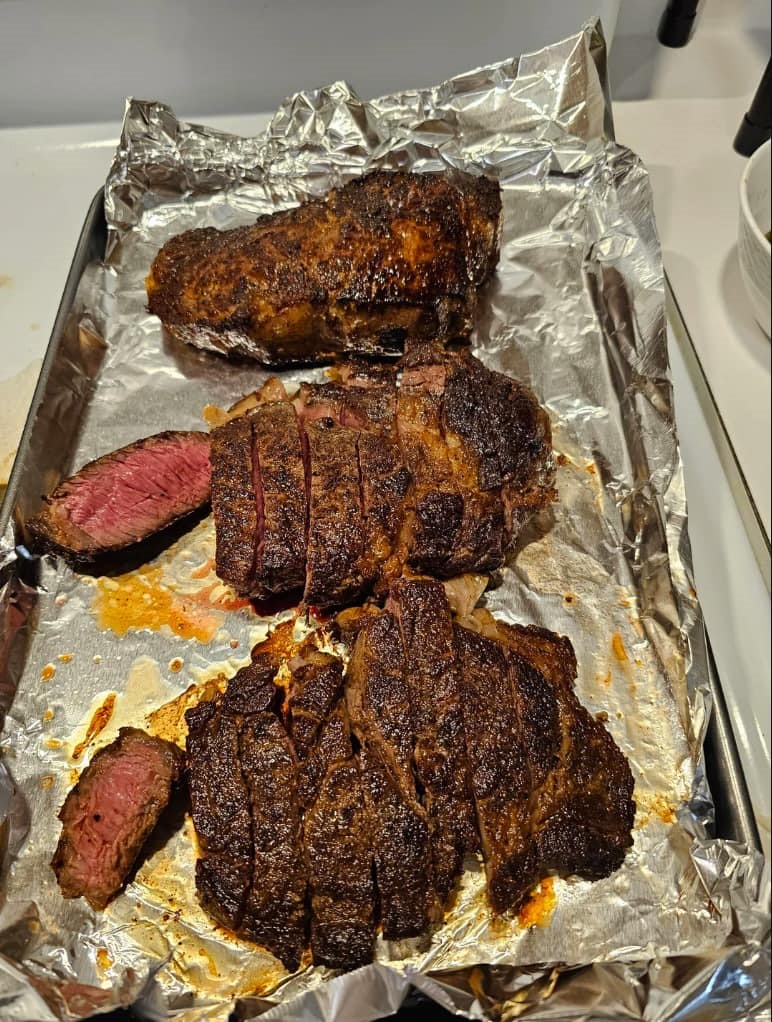ADVERTISEMENT
For an extra burst of flavor, you can add fresh herbs like rosemary, thyme, or garlic cloves to the pan during the last 2-3 minutes of cooking. If you’re using butter, add 1 tablespoon of butter and allow it to melt, spooning the melted butter over the steak to infuse it with flavor.
5. Check for Doneness
The best way to ensure your ribeye steak is cooked to your liking is by using a meat thermometer. Here’s a guide to steak doneness:
- Rare: 120°F – 125°F (cool, red center)
- Medium Rare: 130°F – 135°F (warm red center)
- Medium: 140°F – 145°F (pink center)
- Medium Well: 150°F – 155°F (slightly pink center)
- Well Done: 160°F and above (no pink)
For a perfect medium-rare ribeye, aim for 130°F. The steak will continue to cook slightly while resting, so it’s a good idea to remove it from the heat when it’s about 5°F below your desired doneness.
6. Let It Rest
Once your ribeye steak reaches the desired temperature, remove it from the pan or grill and place it on a plate to rest for 5-10 minutes. Resting allows the juices to redistribute, ensuring your steak stays juicy and tender. Resist the temptation to cut into it right away!
7. Serve and Enjoy
After resting, slice your ribeye against the grain and serve it with your favorite sides. Ribeye pairs wonderfully with roasted vegetables, mashed potatoes, grilled asparagus, or a simple salad.
Tips for the Perfect Ribeye Steak:
- Don’t Overcrowd the Pan: If you’re cooking multiple steaks, cook them in batches to avoid overcrowding, which can lead to steaming rather than searing.
- Use Room Temperature Steak: Always let your ribeye come to room temperature before cooking. Cold meat doesn’t sear as well and can result in uneven cooking.
- Avoid Pressing the Steak: Don’t press down on the steak with your spatula or tongs while cooking. This squeezes out the juices and leads to a dry steak.
- Resting is Key: Never skip the resting step. It’s essential for a juicy steak.
- Experiment with Marinades: If you want extra flavor, marinate your ribeye for 2-4 hours before cooking, but keep the seasoning simple so it doesn’t overpower the natural beef flavor.
Conclusion:
Cooking a homemade ribeye steak is an experience that’s both simple and rewarding. With the right technique, a bit of seasoning, and the proper cooking time, you can make a restaurant-quality steak right in your own kitchen. The rich flavor, tender texture, and savory crust of a ribeye steak are hard to beat, making it a go-to choice for special occasions or a treat any night of the week.
So, fire up your grill or heat that cast-iron skillet, and get ready to enjoy the best homemade ribeye steak you’ve ever had. Happy cooking, and enjoy every juicy bite!
